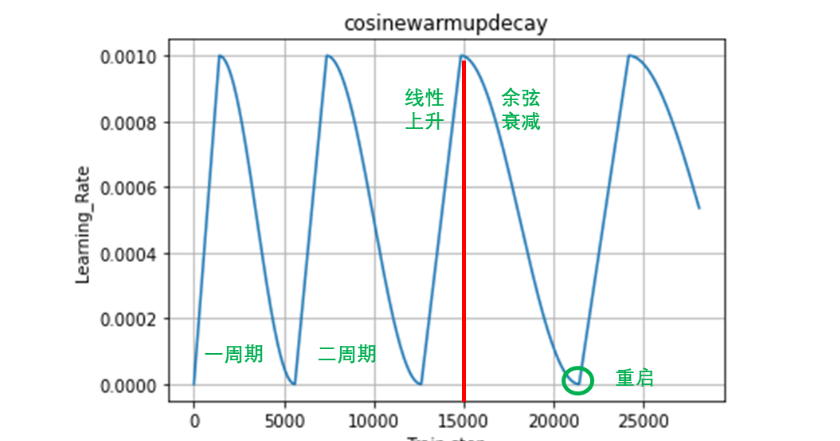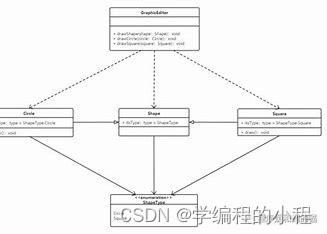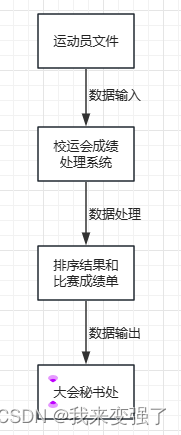Spring Boot 源码学习系列

OnBeanCondition 详解
- 引言
- 往期内容
- 主要内容
- 1. getOutcomes 方法
- 2. getMatchOutcome 方法
- 2.1 ConditionalOnBean 注解处理
- 2.2 ConditionalOnSingleCandidate 注解处理
- 2.3 ConditionalOnMissingBean 注解处理
- 3. getMatchingBeans 方法
- 总结
引言
上篇博文带大家从 Spring Boot 源码深入详解了 OnClassCondition,那本篇也同样从源码入手,带大家深入了解 OnBeanCondition 的过滤匹配实现。
往期内容
在开始本篇的内容介绍之前,我们先来看看往期的系列文章【有需要的朋友,欢迎关注系列专栏】:
| Spring Boot 源码学习 |
| Spring Boot 项目介绍 |
| Spring Boot 核心运行原理介绍 |
| 【Spring Boot 源码学习】@EnableAutoConfiguration 注解 |
| 【Spring Boot 源码学习】@SpringBootApplication 注解 |
| 【Spring Boot 源码学习】走近 AutoConfigurationImportSelector |
| 【Spring Boot 源码学习】自动装配流程源码解析(上) |
| 【Spring Boot 源码学习】自动装配流程源码解析(下) |
| 【Spring Boot 源码学习】深入 FilteringSpringBootCondition |
| 【Spring Boot 源码学习】OnClassCondition 详解 |
主要内容
话不多说,马上进入正题,我们开始本篇的内容,重点详解 OnBeanCondition 的实现。

1. getOutcomes 方法
OnBeanCondition 同样也是 FilteringSpringBootCondition 的子类,我们依旧是从 getOutcomes 方法源码来分析【Spring Boot 2.7.9】:
@Order(Ordered.LOWEST_PRECEDENCE)
class OnBeanCondition extends FilteringSpringBootCondition implements ConfigurationCondition {// ...@Overrideprotected final ConditionOutcome[] getOutcomes(String[] autoConfigurationClasses,AutoConfigurationMetadata autoConfigurationMetadata) {ConditionOutcome[] outcomes = new ConditionOutcome[autoConfigurationClasses.length];for (int i = 0; i < outcomes.length; i++) {String autoConfigurationClass = autoConfigurationClasses[i];if (autoConfigurationClass != null) {Set<String> onBeanTypes = autoConfigurationMetadata.getSet(autoConfigurationClass, "ConditionalOnBean");outcomes[i] = getOutcome(onBeanTypes, ConditionalOnBean.class);if (outcomes[i] == null) {Set<String> onSingleCandidateTypes = autoConfigurationMetadata.getSet(autoConfigurationClass,"ConditionalOnSingleCandidate");outcomes[i] = getOutcome(onSingleCandidateTypes, ConditionalOnSingleCandidate.class);}}}return outcomes;}// ...
}
上述 getOutcomes 方法中针对 自动配置数据的循环处理逻辑,大致可总结为如下两种:
-
通过调用
AutoConfigurationMetadata接口的get(String className, String key)方法来获取与autoConfigurationClass关联的名为"ConditionalOnBean"的条件属性值,可能含多个,存入Set集合onBeanTypes变量中;接着调用getOutcome(Set<String> requiredBeanTypes, Class<? extends Annotation> annotation)方法来获取过滤匹配结果,并赋值给outcomes[i]。我们以 RedisCacheConfiguration 为例,可以看到如下配置:

-
如果上述过滤匹配结果
outcomes[i]为null,则通过调用AutoConfigurationMetadata接口的get(String className, String key)方法来获取与autoConfigurationClass关联的名为"ConditionalOnSingleCandidate"的条件属性值,可能含多个,存入Set集合onSingleCandidateTypes变量中;接着调用getOutcome(Set<String> requiredBeanTypes, Class<? extends Annotation> annotation)方法来获取过滤匹配结果,并赋值给outcomes[i]。我们以 MongoDatabaseFactoryConfiguration 为例,可以看到如下配置:

有关
AutoConfigurationMetadata接口的get(String className, String key)方法的逻辑,请查看 Huazie 的 上一篇博文【Spring Boot 源码学习】OnClassCondition 详解,这里不再赘述。
下面我们继续查看 getOutcome(Set<String> requiredBeanTypes, Class<? extends Annotation> annotation) 方法的逻辑:
private ConditionOutcome getOutcome(Set<String> requiredBeanTypes, Class<? extends Annotation> annotation) {List<String> missing = filter(requiredBeanTypes, ClassNameFilter.MISSING, getBeanClassLoader());if (!missing.isEmpty()) {ConditionMessage message = ConditionMessage.forCondition(annotation).didNotFind("required type", "required types").items(Style.QUOTE, missing);return ConditionOutcome.noMatch(message);}return null;
}
进入 getOutcome 方法,可以看到:
- 首先调用父类
FilteringSpringBootCondition中的filter方法,来获取给定的类集合requiredBeanTypes中加载失败的类集合missing【即当前类加载器中不存在的类集合】; - 如果
missing不为空,说明存在加载失败的类,则返回 不满足过滤匹配的结果【即 ConditionOutcome.noMatch,其中没有找到missing中需要的类型】; - 如果
missing为空,直接返回 null 即可。
2. getMatchOutcome 方法
同 OnClassCondition 一样,OnBeanCondition 同样实现了 FilteringSpringBootCondition 的父类 SpringBootCondition 中的抽象方法 getMatchOutcome 方法。
有关
SpringBootCondition的介绍,这里不赘述了,请查看笔者的 【Spring Boot 源码学习】OnClassCondition 详解。
通过查看 getMatchOutcome 方法源码,可以看到针对 ConditionalOnBean 注解、ConditionalOnSingleCandidate 注解 和 ConditionalOnMissingBean 注解的三块处理逻辑,下面来一一讲解:
@Override
public ConditionOutcome getMatchOutcome(ConditionContext context, AnnotatedTypeMetadata metadata) {ConditionMessage matchMessage = ConditionMessage.empty();MergedAnnotations annotations = metadata.getAnnotations();// ConditionalOnBean 注解处理// ConditionalOnSingleCandidate 注解处理// ConditionalOnMissingBean 注解处理return ConditionOutcome.match(matchMessage);
}
2.1 ConditionalOnBean 注解处理
我们来看看 ConditionalOnBean 注解处理逻辑的源码:
if (annotations.isPresent(ConditionalOnBean.class)) {Spec<ConditionalOnBean> spec = new Spec<>(context, metadata, annotations, ConditionalOnBean.class);MatchResult matchResult = getMatchingBeans(context, spec);if (!matchResult.isAllMatched()) {String reason = createOnBeanNoMatchReason(matchResult);return ConditionOutcome.noMatch(spec.message().because(reason));}matchMessage = spec.message(matchMessage).found("bean", "beans").items(Style.QUOTE, matchResult.getNamesOfAllMatches());}
针对上述代码,且听分析如下:
- 首先调用
MergedAnnotations接口的isPresent(Class<A> annotationType)方法判断指定的注解类型是直接存在或者元存在【这里相当于调用get(annotationType).isPresent()】,如果返回 true,表示存在指定的注解类型。 - 如果存在
@ConditionalOnBean,则- 创建一个条件规范
Spec对象,该类是从底层的注解中提取的搜索规范; - 接着,调用
getMatchingBeans方法,并从上下文【context】中获取与条件规范【spec】匹配的 Spring Beans 的结果【MatchResult】; - 然后,检查匹配结果,如果不是所有的条件都匹配,则继续如下:
- 调用
createOnBeanNoMatchReason方法,创建一个描述条件不匹配原因的字符串并返回; - 返回一个表示未匹配条件的
ConditionOutcome对象【其中包含了条件规范的消息以及不匹配的原因】;
- 调用
- 否则,更新匹配消息,并记录 找到了所有匹配的 Spring Beans。
- 创建一个条件规范
2.2 ConditionalOnSingleCandidate 注解处理
我们继续查看 ConditionalOnSingleCandidate 注解处理逻辑的源码:
if (metadata.isAnnotated(ConditionalOnSingleCandidate.class.getName())) {Spec<ConditionalOnSingleCandidate> spec = new SingleCandidateSpec(context, metadata, annotations);MatchResult matchResult = getMatchingBeans(context, spec);if (!matchResult.isAllMatched()) {return ConditionOutcome.noMatch(spec.message().didNotFind("any beans").atAll());}Set<String> allBeans = matchResult.getNamesOfAllMatches();if (allBeans.size() == 1) {matchMessage = spec.message(matchMessage).found("a single bean").items(Style.QUOTE, allBeans);}else {List<String> primaryBeans = getPrimaryBeans(context.getBeanFactory(), allBeans,spec.getStrategy() == SearchStrategy.ALL);if (primaryBeans.isEmpty()) {return ConditionOutcome.noMatch(spec.message().didNotFind("a primary bean from beans").items(Style.QUOTE, allBeans));}if (primaryBeans.size() > 1) {return ConditionOutcome.noMatch(spec.message().found("multiple primary beans").items(Style.QUOTE, primaryBeans));}matchMessage = spec.message(matchMessage).found("a single primary bean '" + primaryBeans.get(0) + "' from beans").items(Style.QUOTE, allBeans);}}
同样针对上述代码,跟着 Huazie 来一步步分析下:
- 首先调用
AnnotatedTypeMetadata接口的isAnnotated(String annotationName)方法判断元数据中是否存在指定注解。如果返回true,表示元数据中存在指定注解。 - 如果元数据中存在
@ConditionalOnSingleCandidate注解,则- 创建了一个
SingleCandidateSpec的对象spec,并传入上下文 【context】、元数据 【metadata】 和注解信息 【annotations】 ,该类是专门针对@ConditionalOnSingleCandidate注解的条件规范。 - 接着调用
getMatchingBeans方法对context中的所有bean进行匹配,并将与条件规范【spec】匹配的 Spring Beans 的结果存储在matchResult变量中; - 如果没有匹配的
bean,则返回表示未匹配条件的ConditionOutcome对象【其中记录了 没有找到任何bean的信息】; - 否则,获取匹配的所有
bean名称并存储在allBeans变量中。- 如果仅有一个匹配的
bean,则更新匹配消息,并记录找到了 单个bean的信息; - 否则,获取首选
bean名称列表,并检查列表是否为空;- 如果列表为空,则返回表示未匹配条件的
ConditionOutcome对象【其中记录了 一个首选bean也没有找到 的信息】; - 如果首选
bean名称列表包含多个bean,则返回表示未匹配条件的ConditionOutcome对象【其中记录了 找到了多个首选bean的信息】; - 否则,更新匹配消息,并记录 找到了首选
bean的信息。
- 如果列表为空,则返回表示未匹配条件的
- 如果仅有一个匹配的
- 创建了一个
2.3 ConditionalOnMissingBean 注解处理
我们继续查看 ConditionalOnMissingBean 注解处理逻辑的源码:
if (metadata.isAnnotated(ConditionalOnMissingBean.class.getName())) {Spec<ConditionalOnMissingBean> spec = new Spec<>(context, metadata, annotations,ConditionalOnMissingBean.class);MatchResult matchResult = getMatchingBeans(context, spec);if (matchResult.isAnyMatched()) {String reason = createOnMissingBeanNoMatchReason(matchResult);return ConditionOutcome.noMatch(spec.message().because(reason));}matchMessage = spec.message(matchMessage).didNotFind("any beans").atAll();}
经过上述两种处理逻辑的分析,相信大家应该可以看懂第三种处理逻辑的分析:
- 首先调用
AnnotatedTypeMetadata接口的isAnnotated(String annotationName)方法判断元数据中是否存在指定注解。如果返回true,表示元数据中存在指定注解。 - 如果存在
@ConditionalOnMissingBean注解,则- 创建一个条件规范
Spec对象,该类是从底层的注解中提取的搜索规范; - 接着,调用
getMatchingBeans方法,并从上下文【context】中获取与条件规范【spec】匹配的 Spring Beans 的结果【MatchResult】; - 如果存在任何一个匹配的
bean,则- 调用
createOnMissingBeanNoMatchReason方法,创建一个描述条件不匹配原因的字符串并返回; - 返回一个表示未匹配条件的
ConditionOutcome对象【其中包含了条件规范的消息以及不匹配的原因】;
- 调用
- 否则,更新匹配消息,并记录 找不到指定类型的
bean的信息。
- 创建一个条件规范
3. getMatchingBeans 方法
上述三种注解处理逻辑中,我们都看到了调用 getMatchingBeans 方法,下面重点来讲解一下:
protected final MatchResult getMatchingBeans(ConditionContext context, Spec<?> spec) {// ...
}
我们可以看到 getMatchingBeans 方法,有两个参数,它们分别是 上下文 【context】和 条件规范【spec】;
继续看 getMatchingBeans 方法内部逻辑:
ClassLoader classLoader = context.getClassLoader();ConfigurableListableBeanFactory beanFactory = context.getBeanFactory();
这里从上下文【context】中获取 ClassLoader 和 ConfigurableListableBeanFactory ;
知识拓展:
ClassLoader是 Java 中的一个接口,用于加载类。它是 Java 类加载机制的核心部分,负责将 .class 文件转换为 Java 类实例。ClassLoader可以从不同的来源(如文件系统、网络、数据库等)加载类,也可以实现自定义的类加载逻辑。ConfigurableListableBeanFactory是 Spring 框架中的一个核心接口,它扩展了ListableBeanFactory接口,提供了更多的配置和扩展功能。它是一个bean工厂的抽象概念,用于管理 Spring 容器中的bean对象。ConfigurableListableBeanFactory提供了添加、移除、注册和查找bean的方法,以及设置和获取bean属性值的功能。它还支持bean的后处理和事件传播。
boolean considerHierarchy = spec.getStrategy() != SearchStrategy.CURRENT;
这里根据 Spec 对象的 SearchStrategy 属性来确定是否考虑 bean 的层次结构。如果SearchStrategy 是 CURRENT【】,则不考虑层次结构【即 considerHierarchy 为 false】;否则,考虑层次结构【即 considerHierarchy 为 true】。
Set<Class<?>> parameterizedContainers = spec.getParameterizedContainers();
这里获取 Spec 对象的 parameterizedContainers 属性,这是一个包含参数化容器类型的集合
if (spec.getStrategy() == SearchStrategy.ANCESTORS) {BeanFactory parent = beanFactory.getParentBeanFactory();Assert.isInstanceOf(ConfigurableListableBeanFactory.class, parent,"Unable to use SearchStrategy.ANCESTORS");beanFactory = (ConfigurableListableBeanFactory) parent;}
如果 Spec 对象的 SearchStrategy 属性是 SearchStrategy.ANCESTORS,则调用 getParentBeanFactory 方法获取其父工厂,并将其转换为 ConfigurableListableBeanFactory 类型。
MatchResult result = new MatchResult();
新建一个 MatchResult 对象,用于存储匹配结果;
Set<String> beansIgnoredByType = getNamesOfBeansIgnoredByType(classLoader, beanFactory, considerHierarchy,spec.getIgnoredTypes(), parameterizedContainers);
调用 getNamesOfBeansIgnoredByType 方法,获取被忽略类型的 bean 名称集合 beansIgnoredByType ;
for (String type : spec.getTypes()) {Collection<String> typeMatches = getBeanNamesForType(classLoader, considerHierarchy, beanFactory, type,parameterizedContainers);Iterator<String> iterator = typeMatches.iterator();while (iterator.hasNext()) {String match = iterator.next();if (beansIgnoredByType.contains(match) || ScopedProxyUtils.isScopedTarget(match)) {iterator.remove();}}if (typeMatches.isEmpty()) {result.recordUnmatchedType(type);}else {result.recordMatchedType(type, typeMatches);}}
遍历 Spec 对象的 types 属性,它是一个 Set<String> 集合
- 首先,针对每个类型
type,调用getBeanNamesForType方法获取匹配的bean名称集合typeMatches。 - 然后,使用迭代器遍历这个集合,如果集合中的某个元素在被忽略类型的集合中,就将其从迭代器中移除。
- 最后,如果
typeMatches集合为空,则记录未匹配的类型;否则,记录匹配的类型。
for (String annotation : spec.getAnnotations()) {Set<String> annotationMatches = getBeanNamesForAnnotation(classLoader, beanFactory, annotation,considerHierarchy);annotationMatches.removeAll(beansIgnoredByType);if (annotationMatches.isEmpty()) {result.recordUnmatchedAnnotation(annotation);}else {result.recordMatchedAnnotation(annotation, annotationMatches);}}
遍历 Spec 对象的 annotations 属性:
- 首先,针对每个注解
annotation,调用getBeanNamesForAnnotation方法获取匹配的bean名称集合annotationMatches。 - 然后,从
annotationMatches集合中移除被忽略类型的集合。 - 最后,如果
annotationMatches集合为空,则记录未匹配的注解;否则,记录匹配的注解。
for (String beanName : spec.getNames()) {if (!beansIgnoredByType.contains(beanName) && containsBean(beanFactory, beanName, considerHierarchy)) {result.recordMatchedName(beanName);}else {result.recordUnmatchedName(beanName);}}
遍历 Spec 对象的 names 属性,对于每个 bean 名称,如果它不在被忽略类型的集合中,并且它在 bean 工厂中存在,就记录匹配的名称;否则,记录未匹配的名称。
总结
本篇 Huazie 带大家介绍了自动配置过滤匹配子类 OnBeanCondition ,内容较多,感谢大家的支持;笔者接下来的博文还将详解 OnWebApplicationCondition 的实现,敬请期待!!!



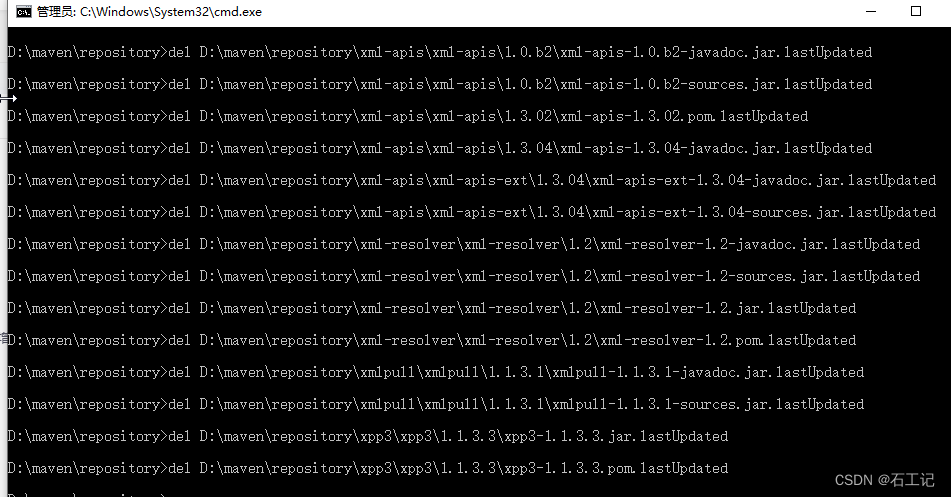

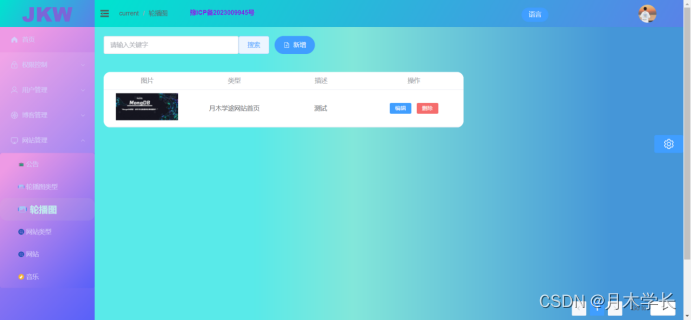



![计算机视觉与深度学习-全连接神经网络-训练过程-模型正则与超参数调优- [北邮鲁鹏]](https://img-blog.csdnimg.cn/a9e2d73ad52c4b94a751d208e1c4a9ce.png)


